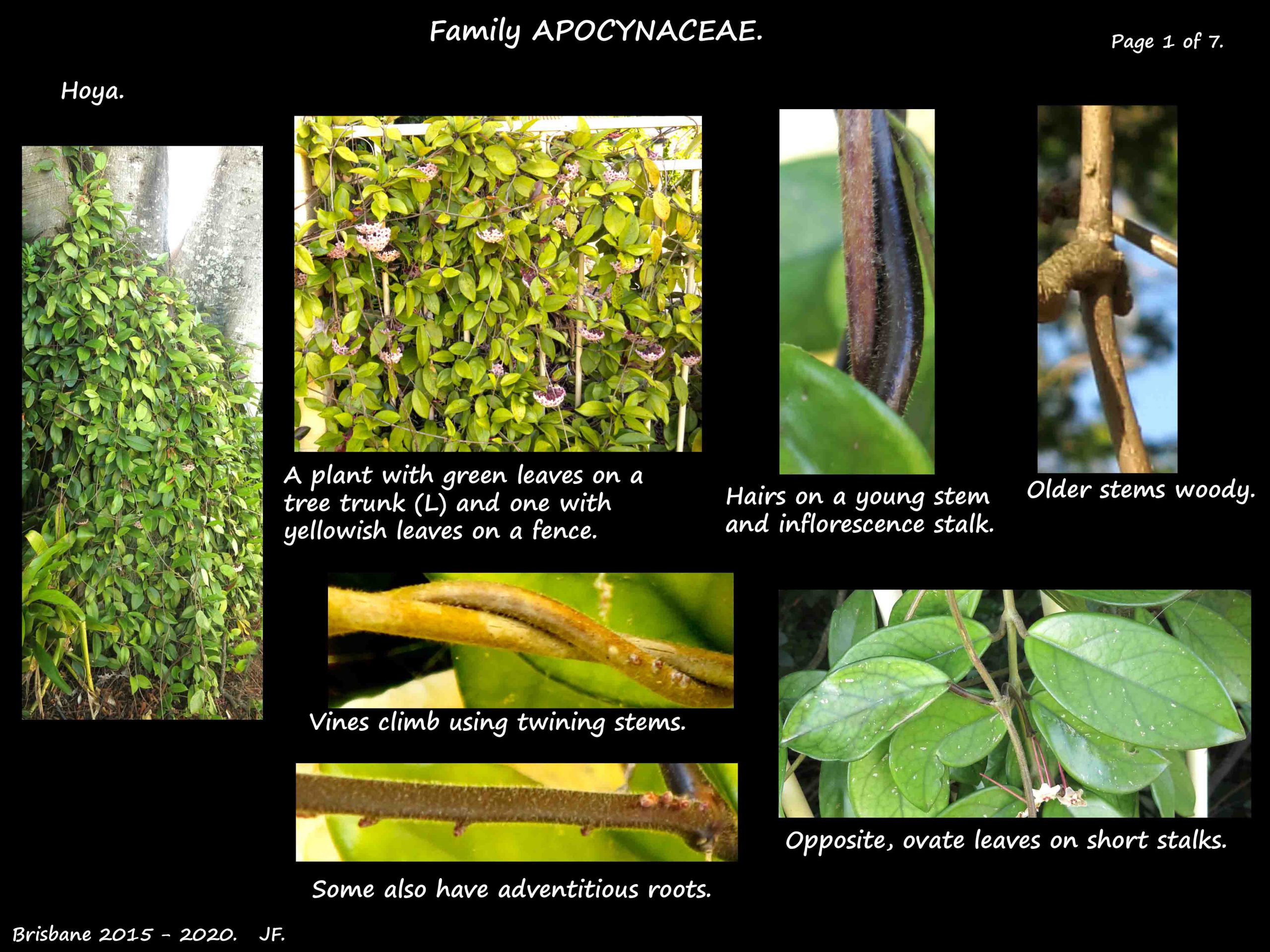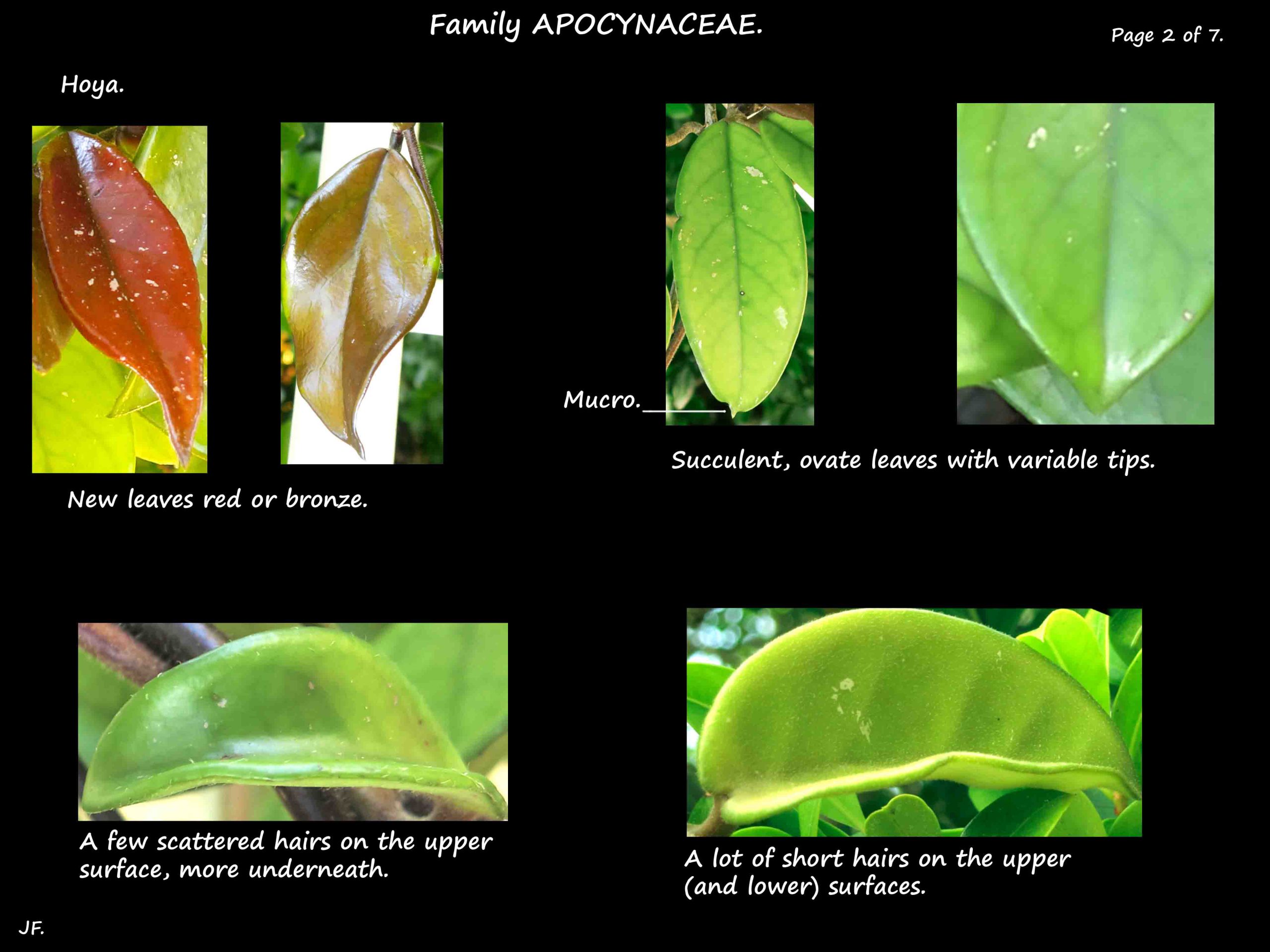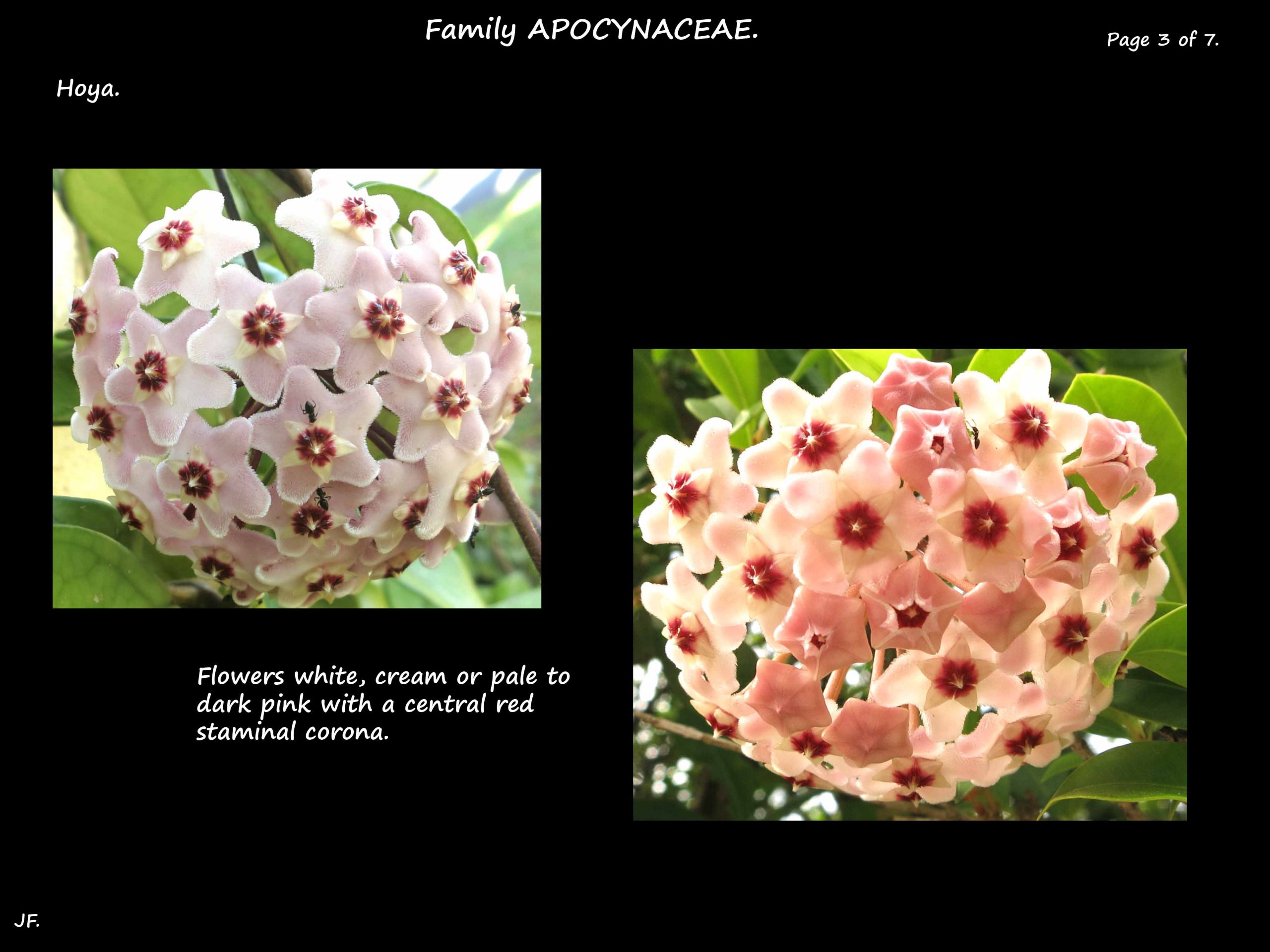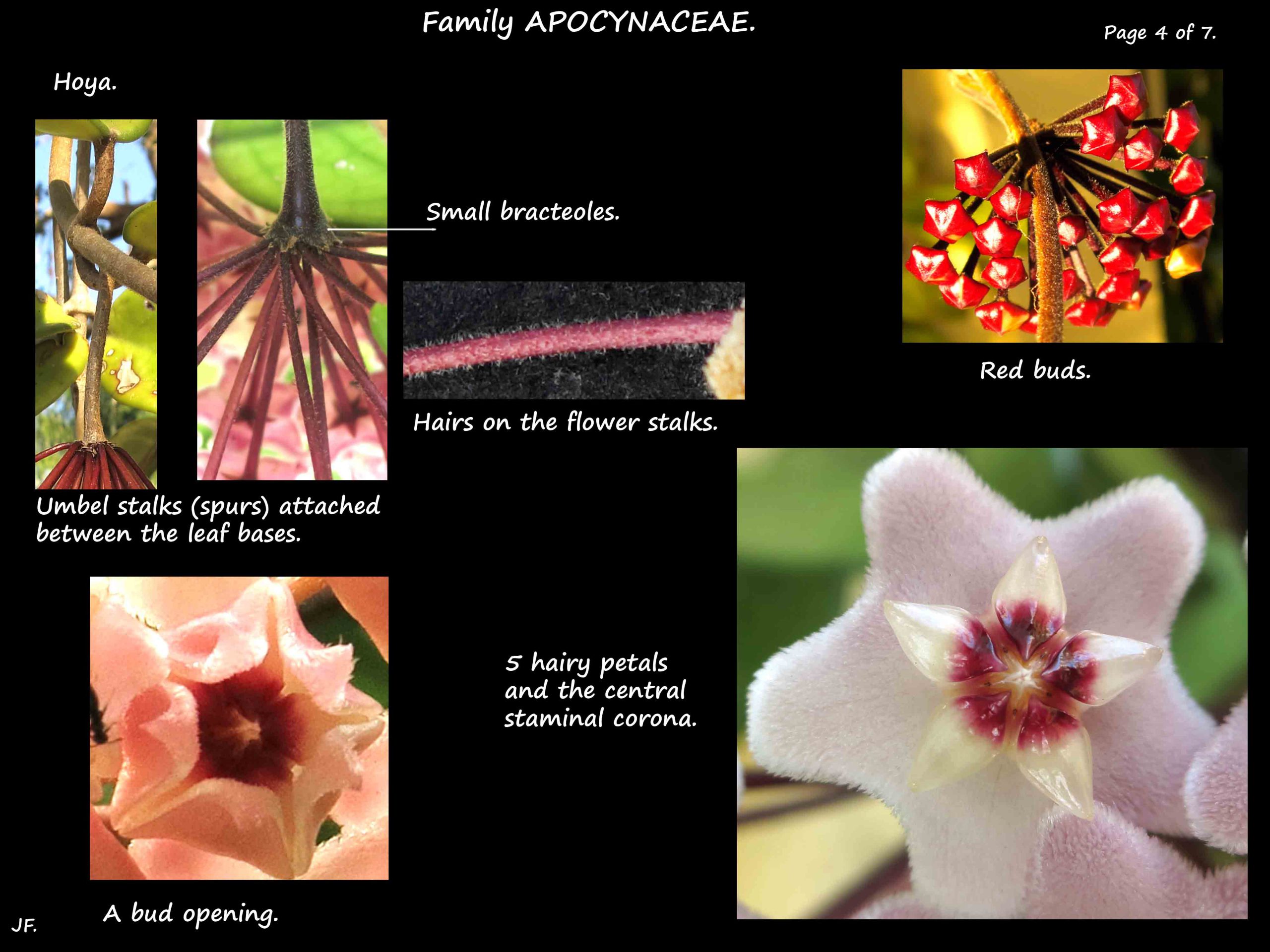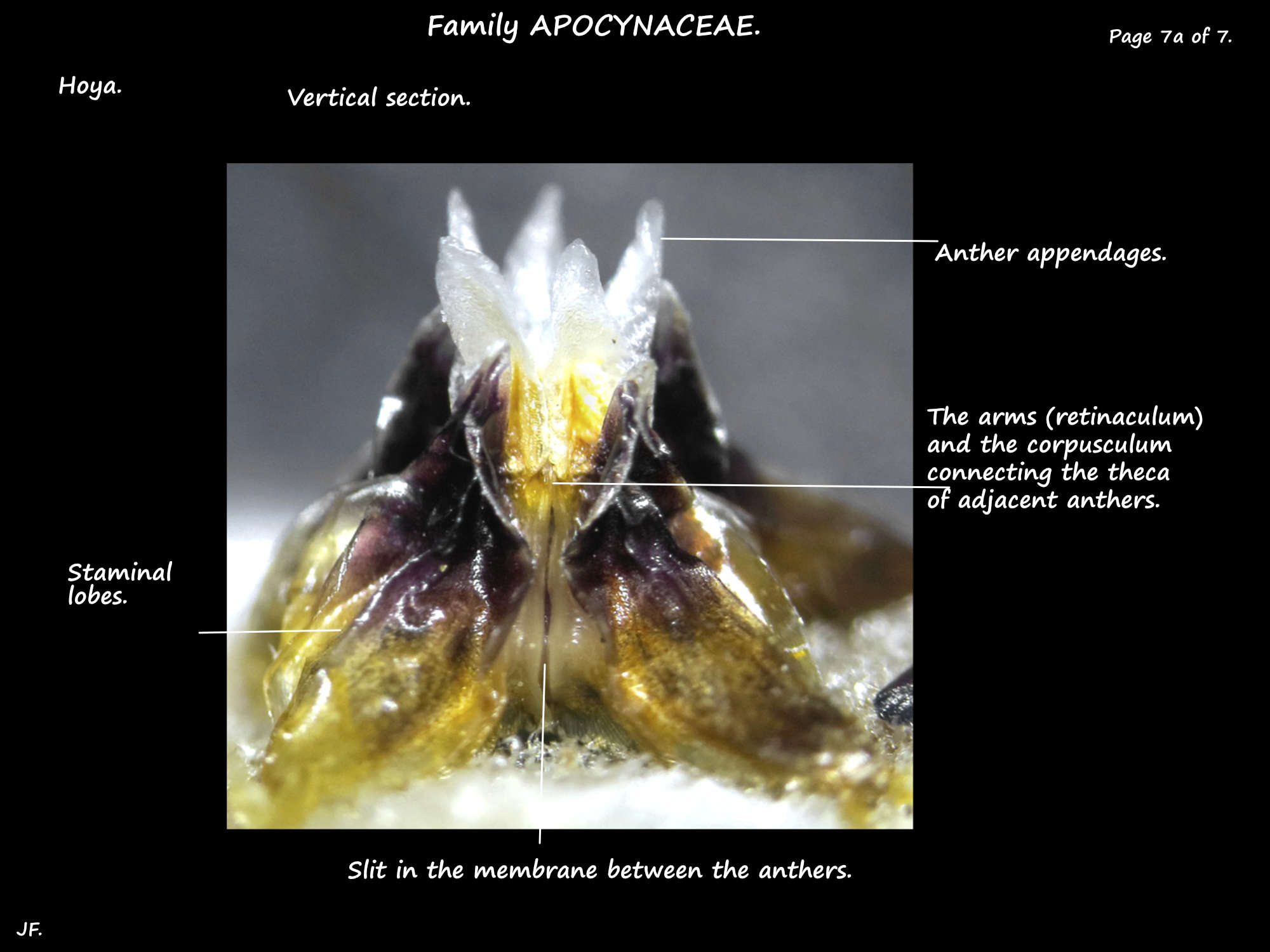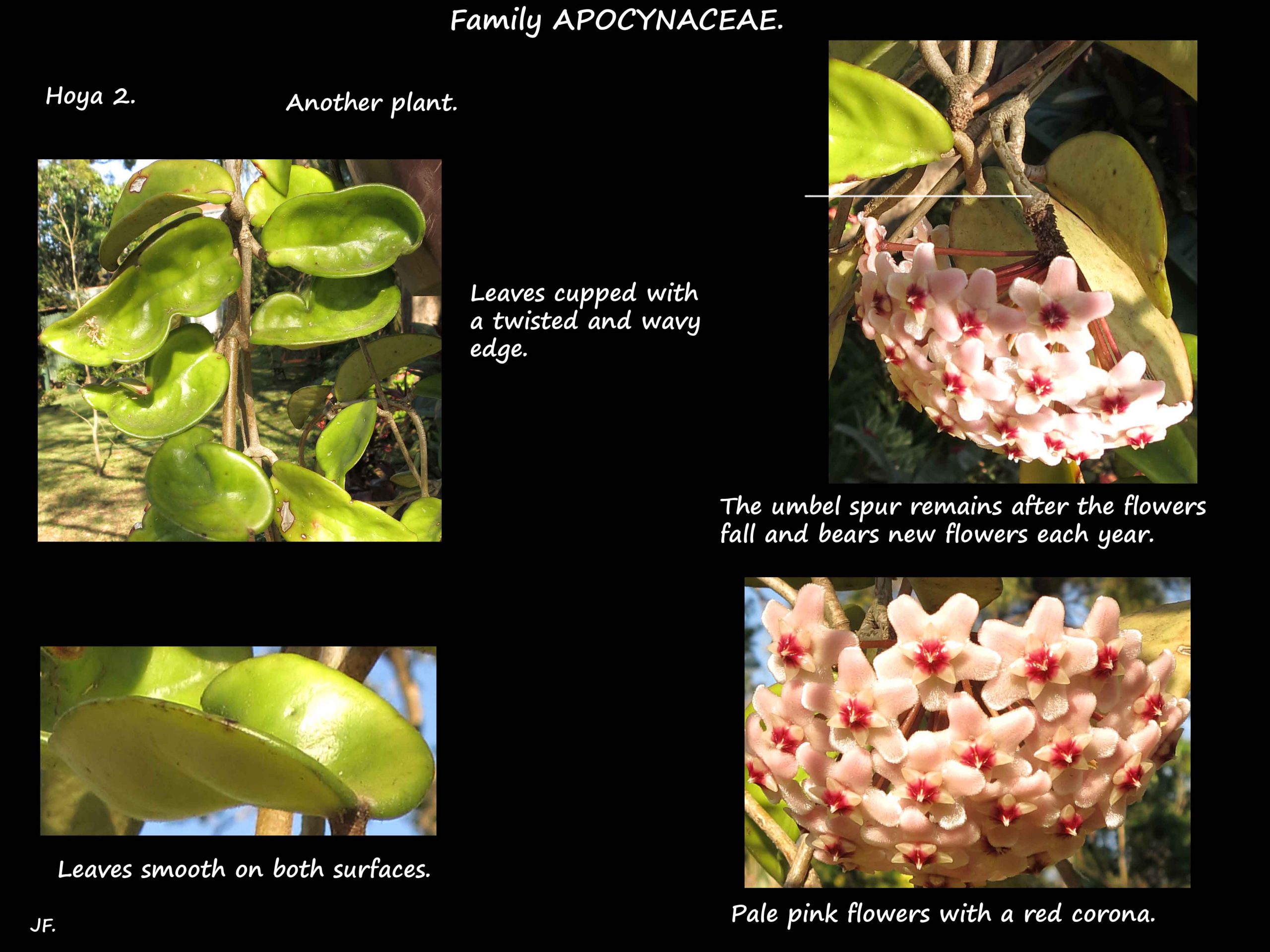Hoya carnosa.
Widely found in Queensland it is the type species for the genus.
Twining stems, green then woody, can be up to 10 m long.
The opposite, ovate to elliptic leaves are on stalks up to 1.5 cm long.
The shiny, succulent blades are up to 13 cm long and 5 cm wide.
They are yellowish to dark green depending on the amount of sunlight.
Inflorescences, umbels with up to 50 star-like flowers, can be pendulous to upright.
The new umbel stalks or pedicels, known as spurs, may initially have no flowers.
Later new flowers, each on its own stalk, form on the same spur each season.
The 5 fleshy petals, white or light to dark pink, are densely covered in hairs.
The shiny, ovate or pointed staminal corona lobes are red with white tips.
There is a lot of nectar that can drip off the flowers.
The spindle-shaped follicles are up to 10 cm long by 1.5 cm wide.
J.F.
